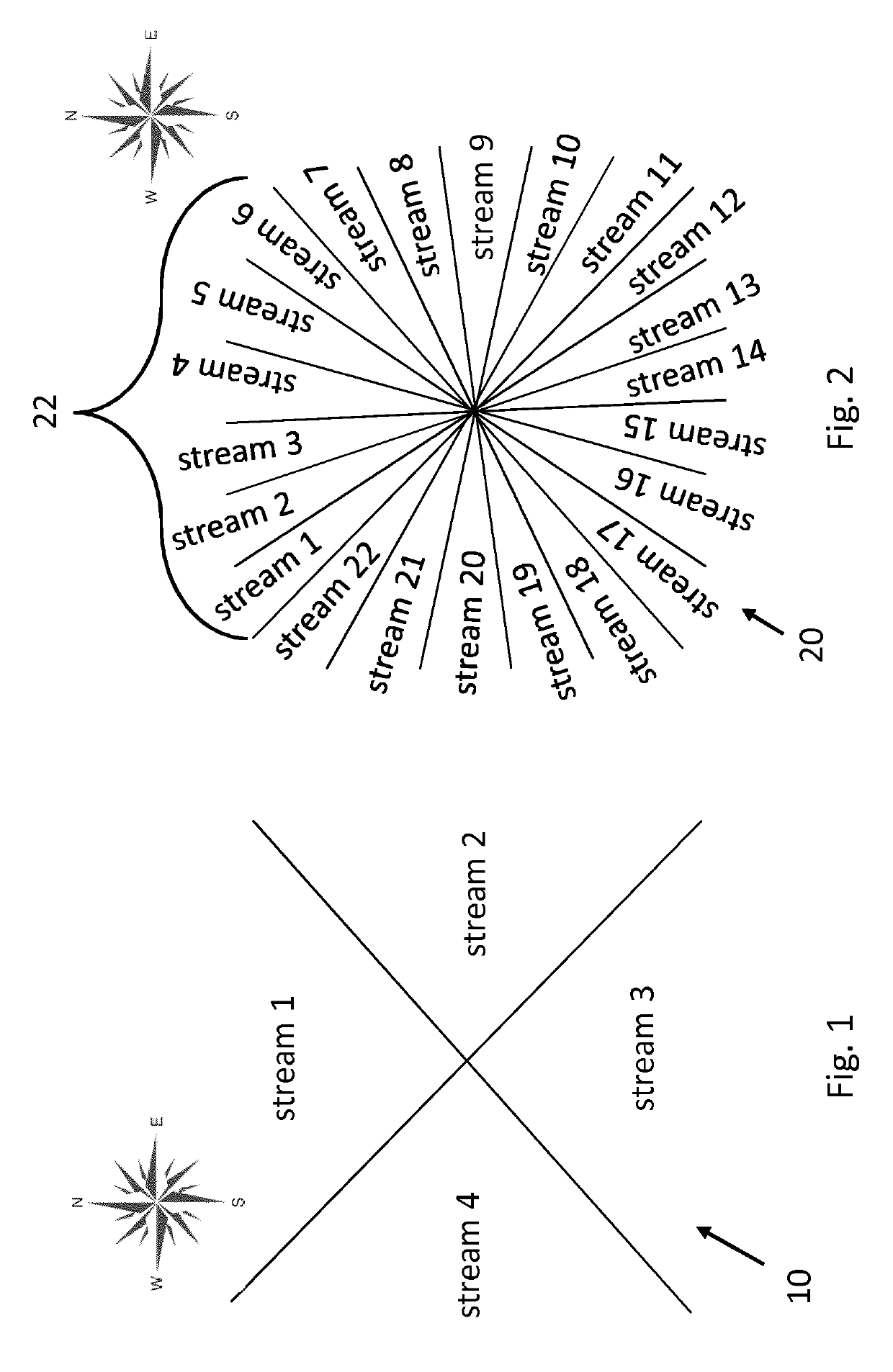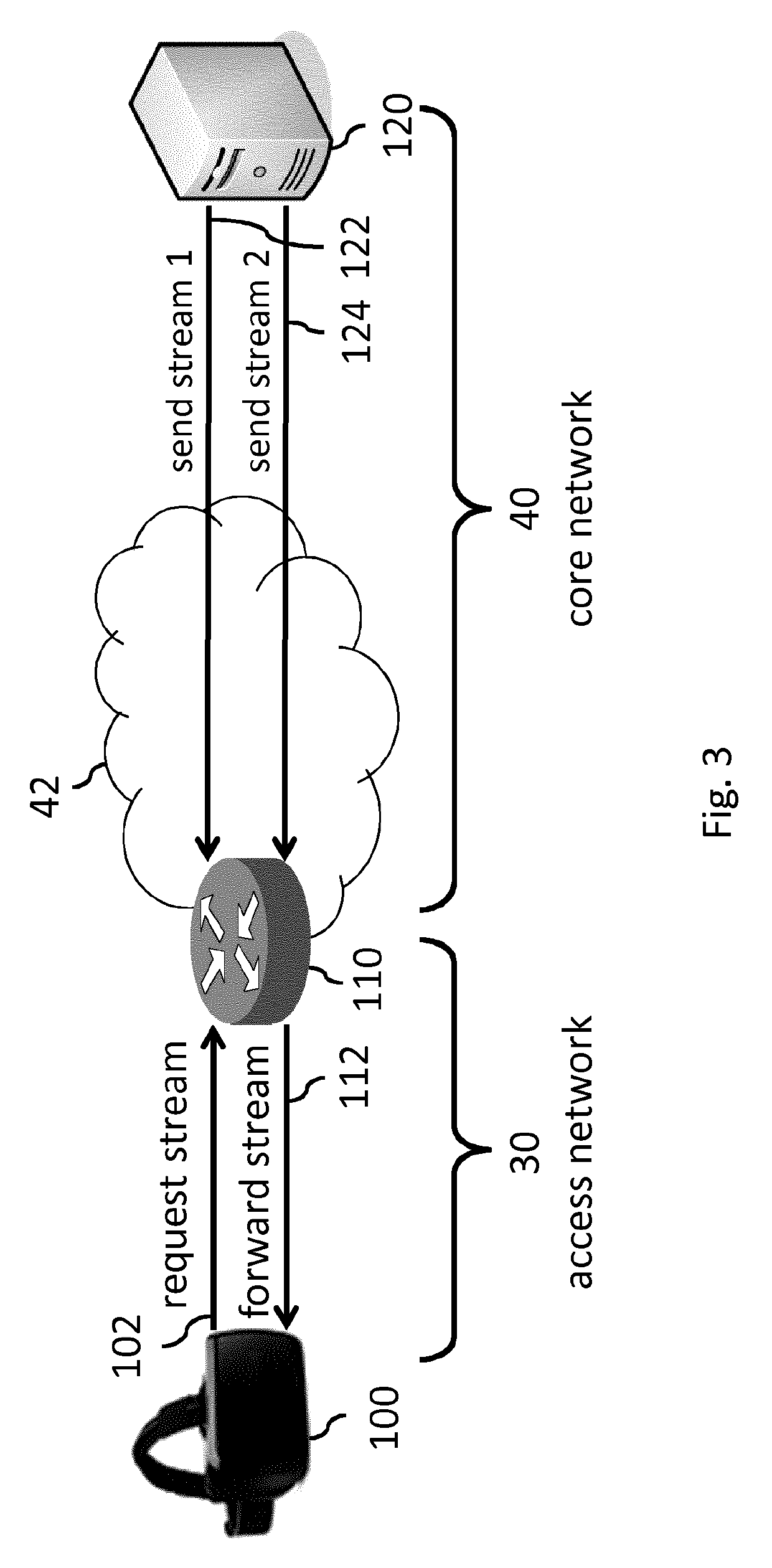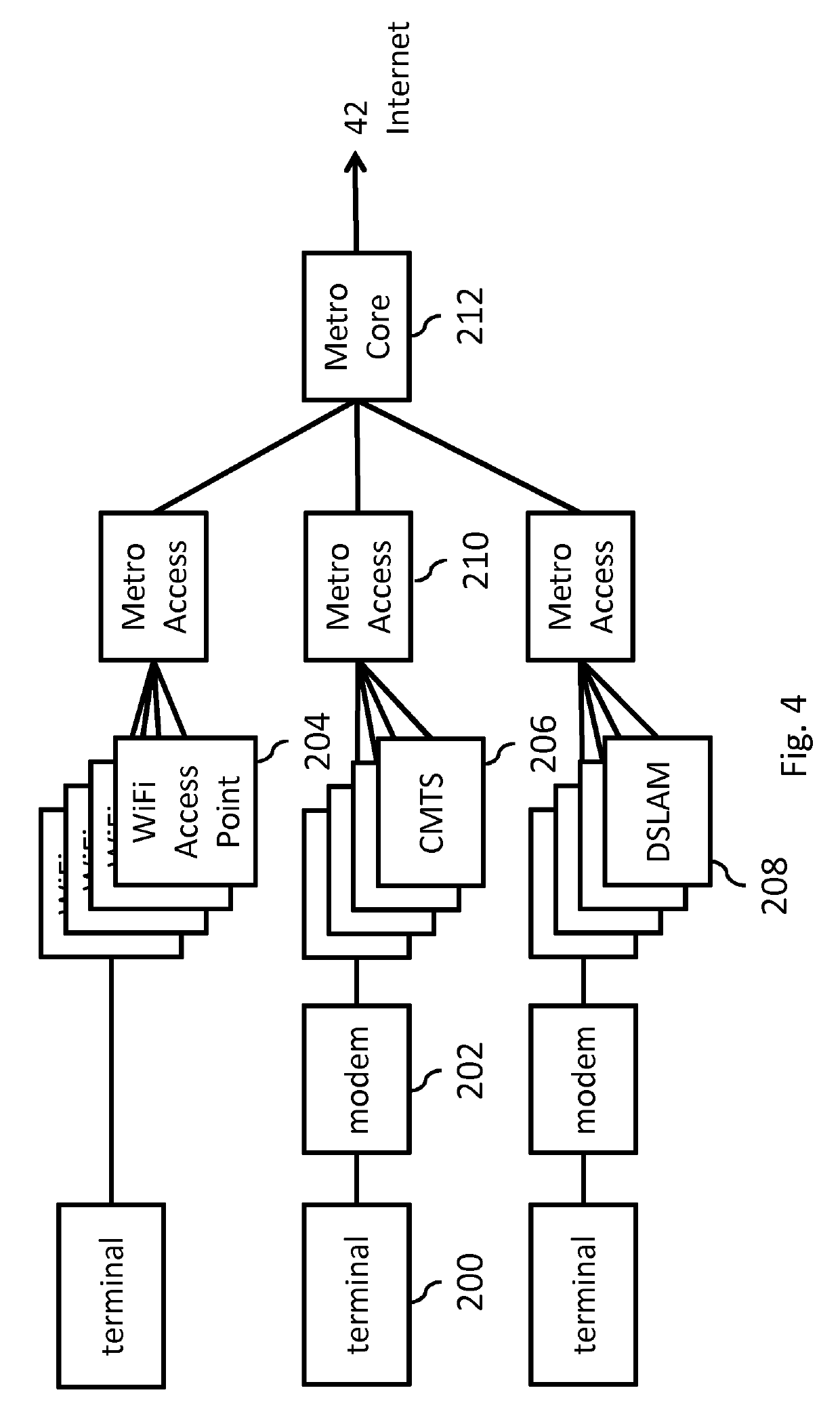Streaming Virtual Reality Video
- Summary
- Abstract
- Description
- Claims
- Application Information
AI Technical Summary
Benefits of technology
Problems solved by technology
Method used
Image
Examples
Embodiment Construction
[0166]The following describes several embodiments of streaming a VR video to a VR rendering device, which may comprise streaming a plurality of streams from one or more stream sources to one or more forwarding nodes downstream of the one or more stream sources and upstream of the VR rendering device, and selectively forwarding a subset of said streams from the one or more forwarding nodes to the VR rendering device in response to a view having to be rendered by the VR rendering device.
[0167]In the following, the VR rendering device may simply be referred to as ‘terminal’, ‘receiver’ or ‘client’, a stream source may simply be referred to as ‘server’ and a forwarding node may simply be referred to as ‘edge node’ or ‘switch’.
[0168]As illustrated in FIGS. 1 and 2, the VR video may be streamed using a plurality of different streams 10, 20 to provide a panoramic view from a certain viewpoint, e.g., that of the user in the VR environment. In the examples of FIGS. 1 and 2, the panoramic vie...
PUM
 Login to View More
Login to View More Abstract
Description
Claims
Application Information
 Login to View More
Login to View More - R&D
- Intellectual Property
- Life Sciences
- Materials
- Tech Scout
- Unparalleled Data Quality
- Higher Quality Content
- 60% Fewer Hallucinations
Browse by: Latest US Patents, China's latest patents, Technical Efficacy Thesaurus, Application Domain, Technology Topic, Popular Technical Reports.
© 2025 PatSnap. All rights reserved.Legal|Privacy policy|Modern Slavery Act Transparency Statement|Sitemap|About US| Contact US: help@patsnap.com



